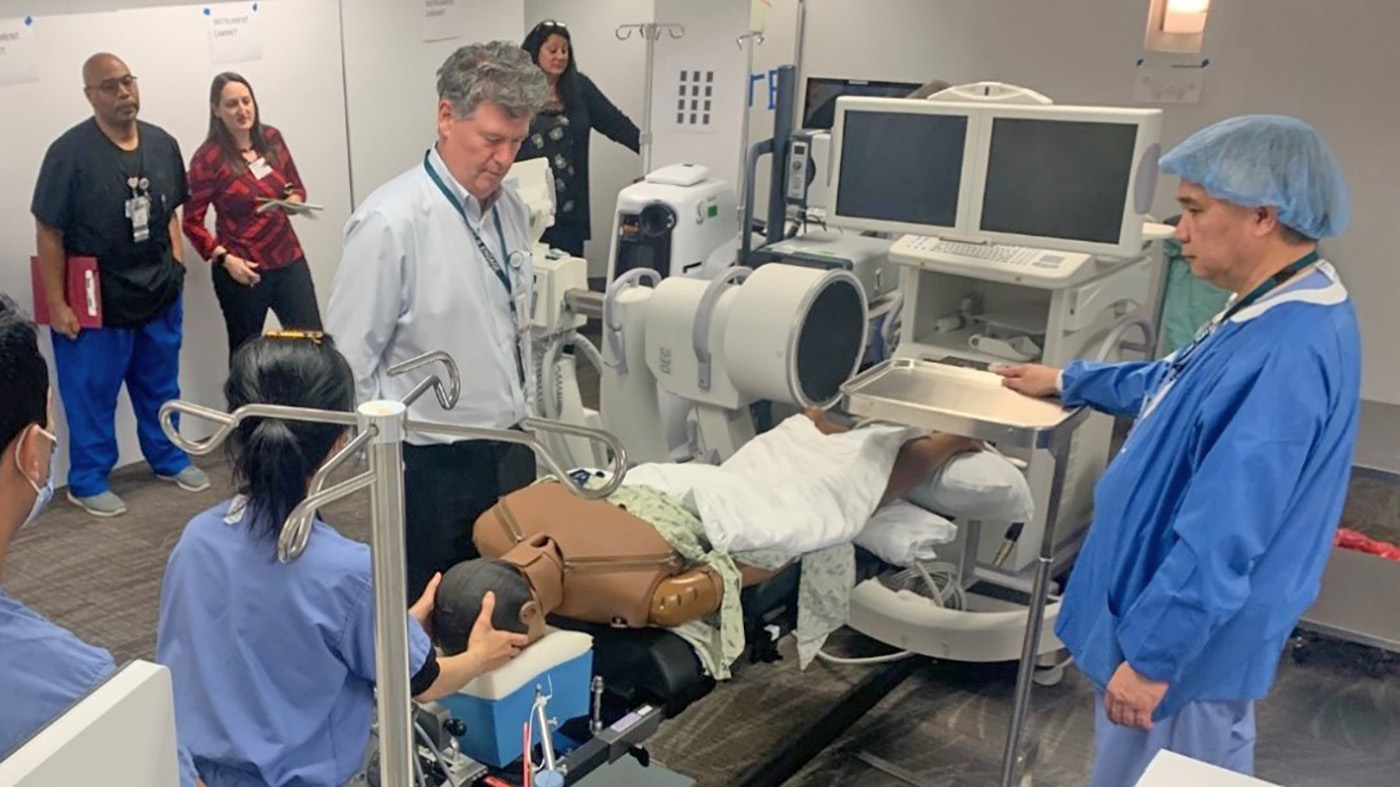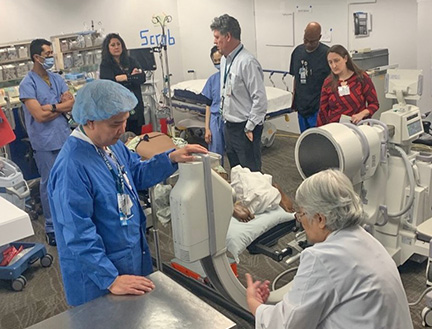Long before construction begins on any part of VA medical centers, clinics or other facilities, VA’s Simulation Learning, Evaluation, Assessment and Research Network (SimLEARN)’s specialized Simulation-based Healthcare Design Testing (SbHDT) team gets to work.
The team uses carefully constructed, highly realistic blueprints and full-scale models to spot flaws early in the design phase to avoid future renovation costs. The team prioritizes access, safety, workflow and quality of care in their design testing, and include administrators, architects and designers in their simulations. But the most vital test-drivers of ensuring optimal VA facilities are Veterans.
Simulating care environments to address issues
VA constantly updates its facilities to better serve today’s Veterans. But new construction projects can come with the risk of hidden issues once construction begins, from hazards of new clinical processes to unseen accessibility barriers. The SbHDT team mitigates these risks before construction begins.
Physical mockups of planned care sites and specialized equipment allows those who will one day use the new facilities, including clinicians and Veterans, to simulate real-world situations like code blue responses or routine appointments.
Simulation testing may include on-the-fly adjustments and re-runs or a series of tests over multiple days to guarantee every inch of an environment Veterans will use enables the best possible care.
During an Operating Room simulation at West Haven VA, Veteran and staff identified safety concerns around equipment layout that were addressed to support the prevention of infection. Simulations reveal operational needs and physical limitations early so engineers, architects and designers can make changes before construction starts. They can also update VA’s design guide, resulting in reduced future costs and a better experience for Veterans and their providers.
Veterans help shape VA’s future by test driving designs
When Veterans walk into new VA facilities in coming years, the exam rooms, hallways and care spaces they enter will likely reflect direct input from Veterans. The four Veterans who participated in a recent SbHDT simulation provided invaluable feedback for engineers, architects and clinicians, helping implement pivotal patient-centered improvements.
During the exercise, 2D designs for VA’s new standardized medical-surgical patient room were translated into life-size models for testing. The simulation involved two different layouts to determine the placement of beds, bathrooms and all equipment needed to respond to patient needs.
Veterans acting as patients gave feedback that helped the team and partners in the Office of Construction and Facilities Management and Patient Experience Office discover that the layout of sinks, toilets, furniture, exam beds and headwalls needed changes to help clinicians respond quickly if a patient falls and to improve safety.
Over 93% of all those who participate in Simulation-based Healthcare Design Testing feel strongly that they would use simulation in the future to identify safety hazards. Revelations stemming from pre-construction testing helps VA save future time, money and potentially Veteran lives.
“It was incredible seeing the depth of thought to perfect these rooms,” one Veteran said after a thorough test run. “Physically testing spaces shows what does or does not work from a real patient experience.”
Another Veteran was grateful to participate and provide feedback that will improve future Veterans’ care. “If only everyone could appreciate the effort and thought that goes into providing Veterans with the best possible care. Thanks for allowing me to participate!”
Simulation-based Healthcare Design Testing allows Veterans’ voices to shape their care environments long before entryways welcome their footsteps. Their input informs better built spaces and supports thoughtful Veteran-centered care within VA.
Topics in this story
More Stories
Study underscores important role COVID vaccination can have in protecting Veterans from infection and reducing long-term health consequences
Columbia VA’s robotic surgery teams completed their 800th robotic surgery and are on schedule to hit 1,000 by the end of the year.
In a decentralized clinical trial, Veterans can participate from their own homes or local VA instead of having to travel to a research site.







